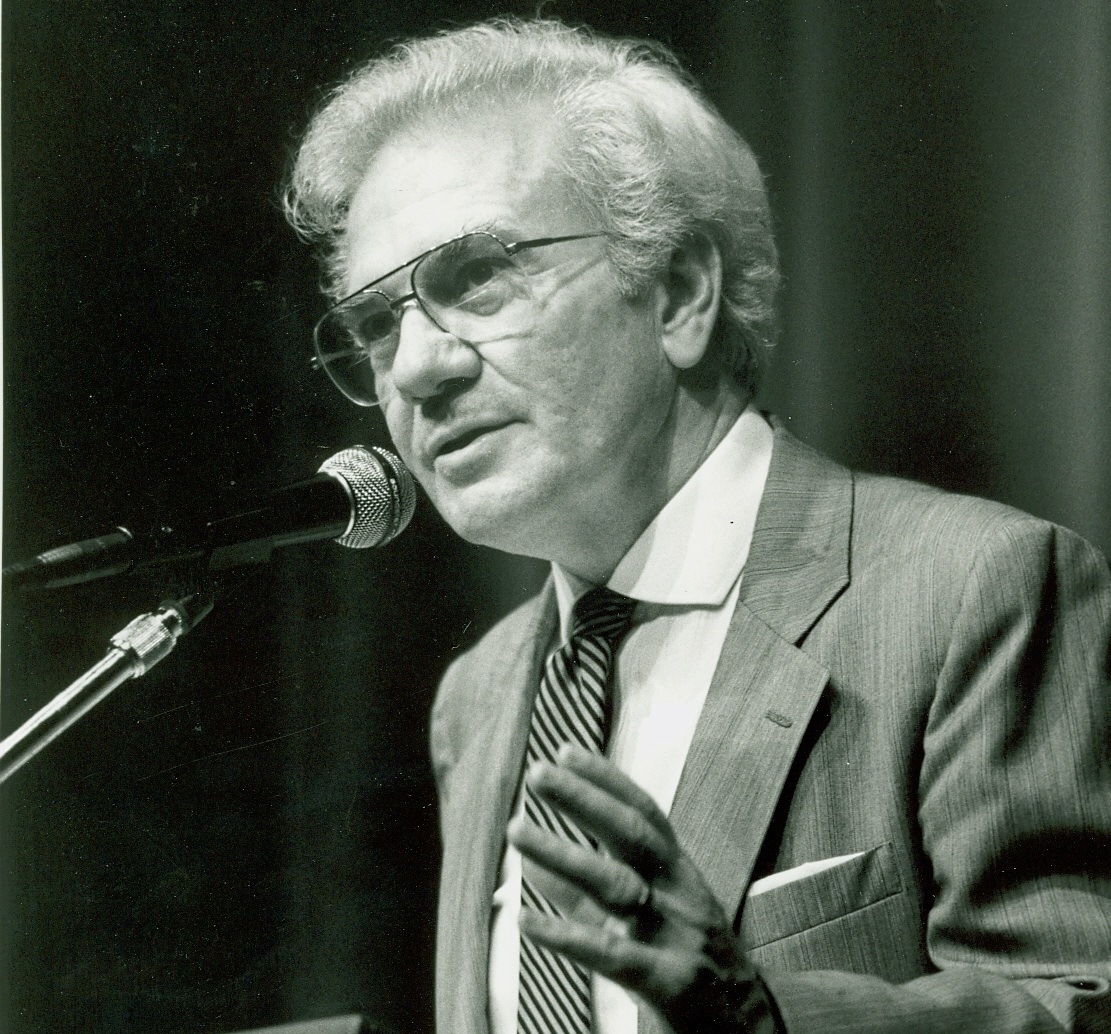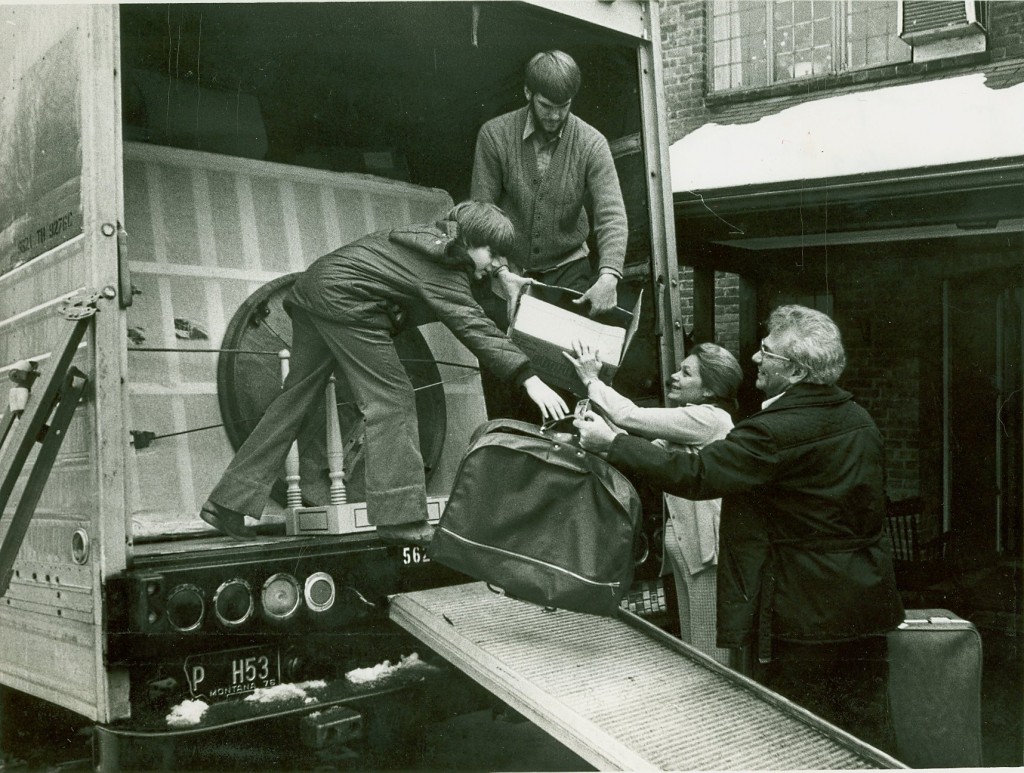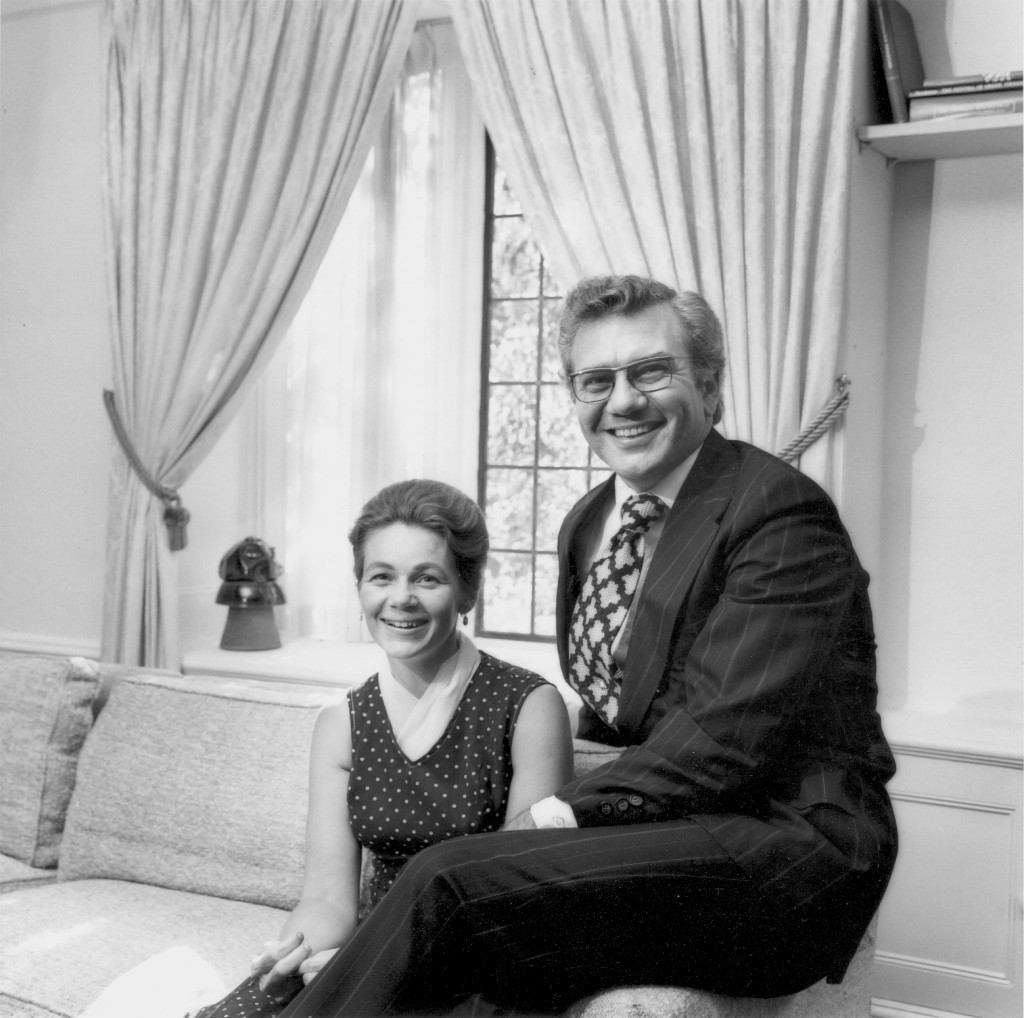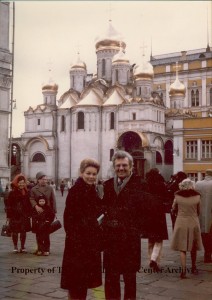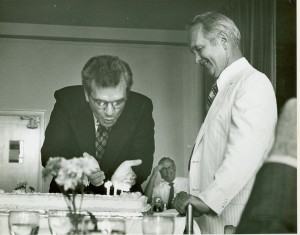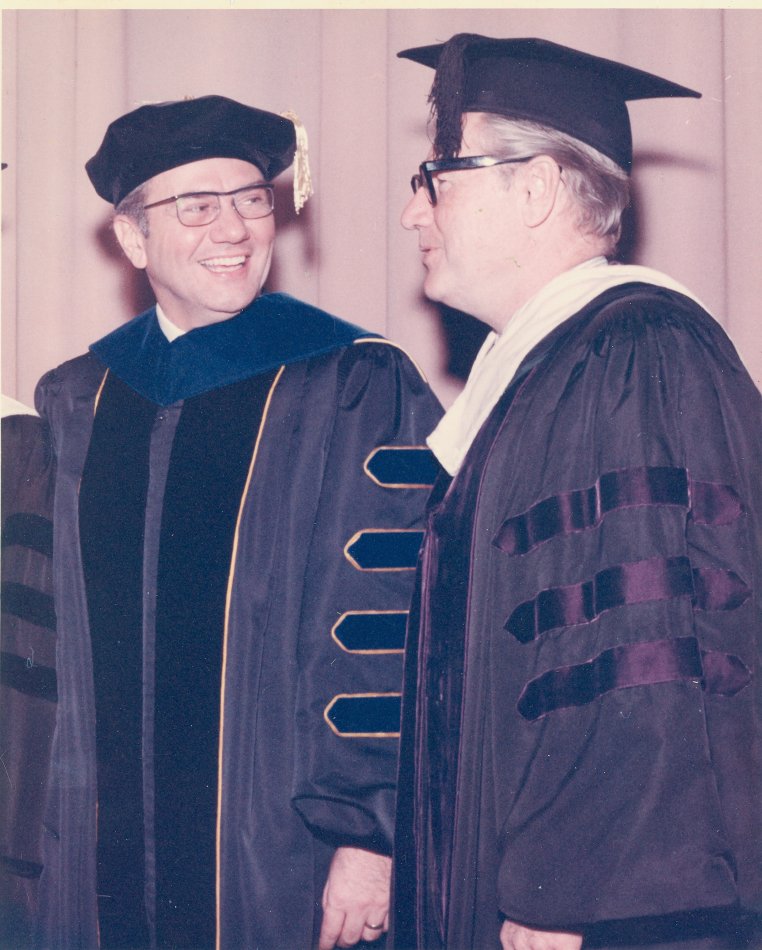
Ernest L. Boyer and Nelson A. Rockefeller on the day of his inauguration as Chancellor of the State University of New York (SUNY). -BCA
Monday April 6th 2015 marked the 44th anniversary of Ernest L. Boyer’s inauguration as chancellor of the State University of New York (SUNY). Today’s Photo Friday commemorates the ceremony as Boyer stands alongside Nelson A. Rockefeller, then governor of New York State.
Boyer served as SUNY chancellor from 1970 to 1977. During that time, he helped to support major changes in the structure and typical perception of what makes a university. Even during his inauguration address, Boyer sets goals to guide the SUNY’s future. He called the university to stand together in the face of adversity by promoting unity, hope, determination, and effort. For example, Boyer proposed a “series of regional ‘Cooperative Councils on Higher Education’”. He supported creativity and reflective thinking on the part of students as well as the equality of teaching compared to research on the part of professors. He was in favor of new three-year institutions to allow flexibility for teaching and for the individual student. Finally, despite the “yawning chasm” between the campus and the surrounding town, Boyer advocated a deep connection between the university and the community.
In all of these ways, Boyer challenged the conventional methods of university life. Nevertheless, the significance of Boyer’s words extends far beyond the moment of his inauguration or his time as chancellor.
In his speech, Boyer states:
I do not for one moment misjudge the urgencies we face. They are very real. And yet, ultimately, the issue is not the gravity of the crisis but rather the quality of our response. The strength, the fiber of an institution, as in all of us, is not revealed in tranquil, easy times. Rather, character shines through when adversity looms large and hard choices must be made…Our future will be shaped, not by mysterious, invisible forces beyond ourselves, but by the convictions we agree to share and the actions we decide to take.
Although Boyer proposed many innovative programs as chancellor of SUNY, they are not the reason for celebrating his legacy. Rather, the principles that lay behind these innovations should be celebrated. Boyer understood that all of us will face struggles, but we can grow through them, not just individually, but collectively, by acting on the convictions we hold. Therefore, today’s post celebrates both the beginning and the continuation of a legacy that is felt today.
To read the rest of Boyer’s inauguration speech, click here. Or click here to learn more about Boyer and his time as chancellor of SUNY.
